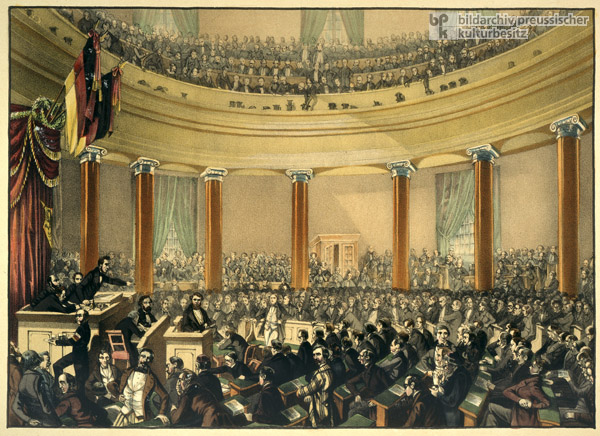













INTRODUCTION | DOCUMENTS | IMAGES | MAPS | EDITOR
|
The members of the Frankfurt National Assembly represented all of Germany and Austria. They had been elected to effect the changes demanded during the Revolution of 1848 and to unify Germany on the basis of popular self-determination. The parliament’s most significant accomplishments included the drafting of a Charter of Basic Rights and a constitution. In 1848, there were still no political parties – in today’s sense of the term – in the German states; nonetheless, representatives came together on the basis of common goals and interests and formed factions. These factions conceived of themselves as clubs and named themselves after the Frankfurt locales in which they assembled. The lithograph below shows the interior of St. Paul’s Church, where the Frankfurt National Assembly met. The church has been decorated with black, red, and gold flags and garlands; the pulpit and altar have been hidden by a curtain (left), in front of which a podium has been erected, along with a box for the executive committee. The first president of the Frankfurt National Assembly, Heinrich von Gagern (1799-1880), stands in the box, gesturing toward the group; the two vice presidents sit next to him. Seated in front of the executive committee, the stenographers are recording the speeches and debates. Over the course of the parliamentary session, the interior of the church was altered to meet the needs of the assembly: wooden ceiling panels were installed to improve the acoustics, for example, and gas lighting and central heating were eventually introduced. Contemporary lithograph after a drawing by Leo von Elliott.
© Bildarchiv Preußischer Kulturbesitz |
 print version
print version return to image list
return to image list previous image
previous image
